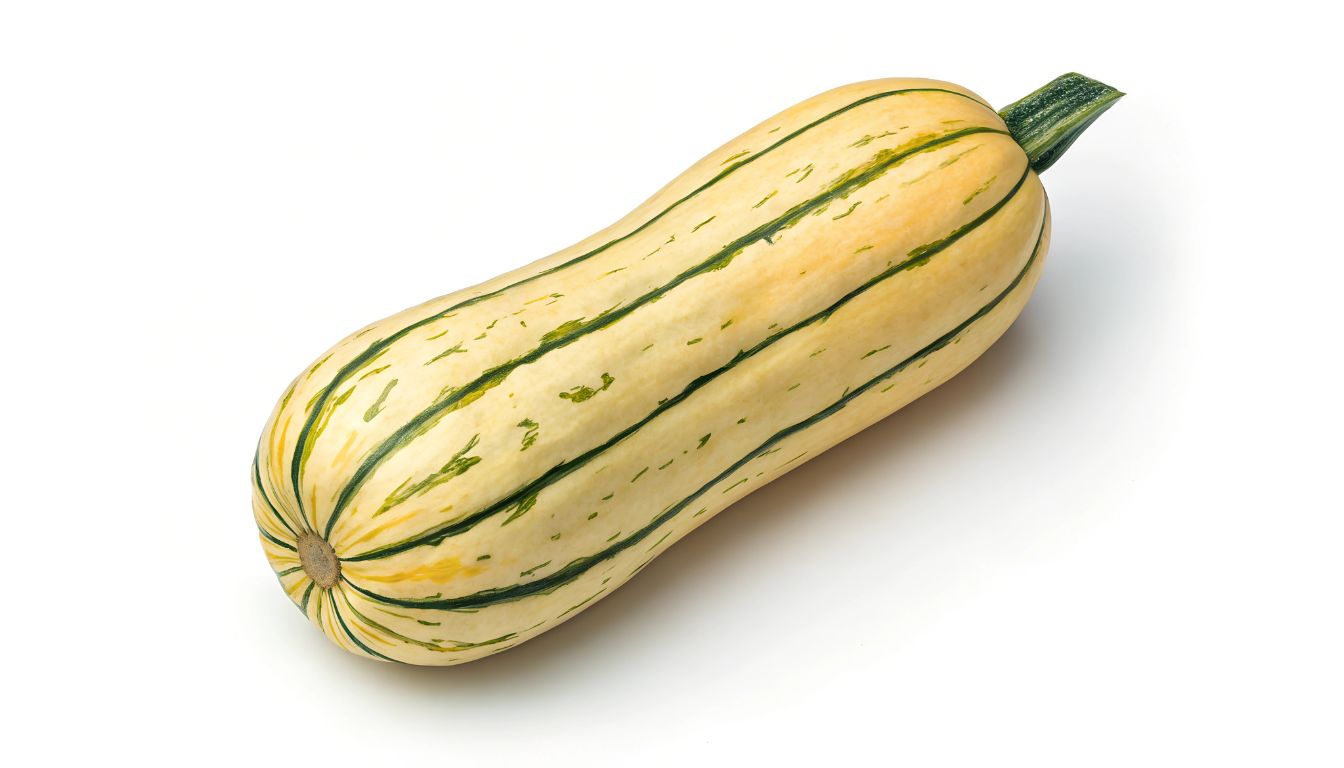If you’re looking to spice up your garden and your kitchen, the delicata squash plant is a must-have. With its creamy texture and sweet, nutty flavor, this versatile vegetable can elevate any dish, from soups to roasted sides. But it’s not just about taste, growing delicata squash is a rewarding experience that brings a touch of beauty to your garden with its vibrant, striped skin.
Overview of Delicata Squash Plant
Delicata squash offers a delightful addition to any garden. This variety features a creamy texture and a sweet, nutty flavor that transforms soups and roasted dishes. The unique, striped skin catches the eye and adds a pop of color to garden landscapes.
Growing this squash isn’t just rewarding; it’s fun too. Its growth cycle typically spans 85 to 100 days, making it a quicker option for gardeners. I find planting seeds directly in the soil a straightforward approach. Alternatively, starting seeds indoors can give you a head start.
The plant thrives in full sun and well-drained soil. Consistent watering promotes healthy growth, ensuring the squash develops its signature flavors. I’ve noticed that a mulch layer helps retain moisture and suppress weeds.
Harvesting time comes when the skin hardens and the color deepens. It’s as easy as giving it a gentle squeeze. Storage is also simple, as the squash can last for several months in a cool, dry place.
I love experimenting with delicata squash in different recipes. Whether grilled, baked, or pureed into soups, it never disappoints. With all these benefits, growing delicata squash can add flavor, color, and joy to any kitchen.
Growing Conditions
Delicata squash thrives under specific growing conditions that ensure a successful harvest. Here’s what you need to know about its soil, sunlight, and water requirements.
Soil Requirements – Delicata Squash Growing Tips: Cultivate a Tasty Harvest
Delicata squash enjoys rich, well-drained soil. I often use a mix of compost and topsoil to achieve this. Soil pH should be slightly acidic to neutral, ideally between 6.0 and 7.0. Good drainage prevents waterlogging, which helps avoid root rot. Adding organic matter increases soil fertility and promotes healthy growth. Always mix in some compost before planting to give my squash a nutrient boost.
Sunlight and Water Needs
Full sun is crucial for healthy delicata squash. I position my plants where they can receive at least six to eight hours of sunlight daily. This exposure encourages growth and enhances sweetness. Watering is essential, especially during dry spells. I water deeply and consistently to keep the soil moist but not soggy. Aim for about one inch of water per week. Mulching helps retain soil moisture and suppresses weeds, making my gardening experience easier.
Planting and Care

Growing delicata squash takes some straightforward steps. I enjoy this process because it’s simple and rewarding.
Seed Selection and Planting Techniques
I begin by selecting quality seeds from a trusted source. I prefer organic seeds for better taste and health benefits. Plant seeds outdoors after the last frost, when the soil temperature reaches about 70°F. You can also start seeds indoors 2 to 4 weeks before the last frost. Transplant them outdoors when they have at least two true leaves.
When planting, aim for a spacing of 24 to 36 inches apart. Dig holes about an inch deep, place two seeds in each hole, and cover with soil. Water lightly after planting. If both seeds sprout, thin them out by snipping the weaker seedling at the base. This ensures that the stronger plant has ample space.
Maintenance and Pest Control – Delicata Squash Growing Tips: Cultivate a Tasty Harvest
Maintaining the delicata squash requires regular attention. Water regularly, aiming for one inch per week. I find that deep watering encourages strong roots. A good layer of mulch helps retain moisture and suppresses pesky weeds.
I keep an eye out for common pests, such as squash beetles and aphids. Handpicking these pests works well for me. Introducing beneficial insects like ladybugs can also help control pest populations naturally. If pests are overwhelming, I occasionally use insecticidal soap.
With these steps, growing delicata squash can be an enjoyable experience that yields delicious results.
Harvesting and Storage
Harvesting delicata squash happens when the skin hardens and the color deepens. I check the squash, usually around 85 to 100 days after planting. I look for a rich, creamy yellow or a bright orange hue. If it feels firm and resists my fingernail, it’s ready to pick. Cutting the squash from the vine instead of pulling it helps prevent damage.
Proper storage techniques ensure the squash lasts several months. I store freshly harvested delicata squash in a cool, dry, dark place. An ideal temperature ranges from 50°F to 60°F. I avoid direct sunlight and damp areas, as moisture can cause rot. A breathable mesh bag or a cardboard box works well for storage, allowing air circulation. Checking the squash weekly helps catch any signs of spoilage early.
These simple steps keep my delicata squash fresh and ready for cooking, making it easier to enjoy this tasty treat all season.
Culinary Uses
Delicata squash shines in the kitchen with its unique flavor and texture. This versatile squash adapts well to various cooking methods and recipes.
Recipes Featuring Delicata Squash – Delicata Squash Growing Tips: Cultivate a Tasty Harvest
I love using delicata squash in my fall dishes. Roasting it brings out the sweetness. I slice it, toss it with olive oil, salt, and pepper, then roast it at 400°F for about 25 minutes. It becomes tender and caramelized.
Stuffed delicata squash makes a stunning presentation. I fill it with a mixture of quinoa, nuts, cranberries, and spices. The colorful filling contrasts beautifully with the squash’s striped skin.
In soups, delicata squash adds a creamy texture. I blend it with vegetable broth and spices for a rich, hearty soup. The subtle nutty flavor enhances the dish.
Nutritional Benefits
Delicata squash packs a nutrient punch. It contains vitamins A and C, which support immune function and skin health. Each serving offers fiber, essential for digestive health.
The squash is low in calories, making it a smart choice for weight management. One cup provides around 40 calories, allowing for hearty meals without the guilt. I find it satisfying and enjoyable.
Incorporating delicata squash into your diet can contribute to overall wellness. It’s tasty, nutritious, and easy to prepare. Whether roasted, stuffed, or blended into soup, it brings a delicious twist to any meal.
Before You Go – Delicata Squash Growing Tips: Cultivate a Tasty Harvest

Growing delicata squash has truly been a rewarding experience for me. It’s sweet and nutty flavor transforms my meals while adding a burst of color to my garden. I appreciate how easy it is to cultivate and care for this plant, making it accessible for both novice and seasoned gardeners.
The joy of harvesting my delicata squash and experimenting with various recipes is unmatched. Whether I’m roasting it or incorporating it into soups, it never fails to impress. I encourage you to give delicata squash a try in your garden and kitchen. You won’t regret it.
Don’t forget to add theherbprof.com homepage to your favourites so you don’t miss out on future articles.
References – Delicata Squash Growing Tips: Cultivate a Tasty Harvest
Little Herb Encyclopedia, by Jack Ritchason; N.D., Woodland Publishing Incorporated, 1995
The Ultimate Healing System, Course Manual, Copyright 1985, Don Lepore
Planetary Herbology, Michael Tierra, C.A., N.D., Lotus Press, 1988
Handbook of Medicinal Herbs, by James A. Duke, Pub. CRP Second Edition 2007
The Complete Medicinal Herbal, by Penelope Ody, Published by Dorling Kindersley
Check the Following Article
Guar Bean: Amazing Health Benefits for Your Diet
Fish Oil for PCOS: Benefits and Symptom Management
Easy Tips to Grow Zinnias Indoors: Vibrant Blooms at Home
Guide to Grow Quinoa: A Nutritional Powerhouse at Home
Frequently Asked Questions – Delicata Squash Growing Tips: Cultivate a Tasty Harvest
What is Delicata squash known for?
Delicata squash is celebrated for its sweet, nutty flavor and creamy texture. It enhances various dishes, making it a favorite in soups and roasted sides.
How long does it take to grow a Delicata squash?
Delicata squash typically has a growth cycle of 85 to 100 days from planting to harvest, depending on growing conditions and care.
What are the best conditions for growing delicata squash?
This squash thrives in full sun, requiring at least six to eight hours of sunlight daily. It prefers well-drained, fertile soil with a slightly acidic to neutral pH.
When should I plant Delicata squash seeds?
Plant seeds outdoors after the last frost when soil temperatures reach about 70°F. Alternatively, you can start seeds indoors 2 to 4 weeks prior.
How do I know when to harvest Delicata squash?
Harvest delicata squash when the skin hardens and the color deepens, typically 85 to 100 days after planting. Look for a rich, creamy yellow or bright orange hue.
What is the best way to store Delicata squash?
Store fresh delicata squash in a cool, dry, dark place at temperatures between 50°F and 60°F. Use breathable containers and check weekly for spoilage.
What are some popular recipes for Delicata squash?
Popular recipes include roasting it to amplify sweetness, stuffing it with quinoa, nuts, and cranberries, or blending it into creamy soups for added flavor and nutrition.

